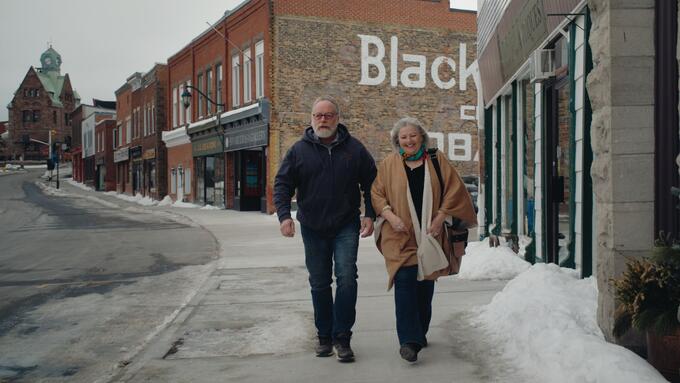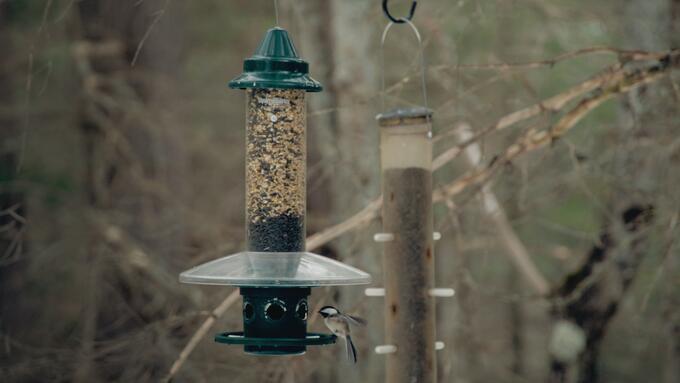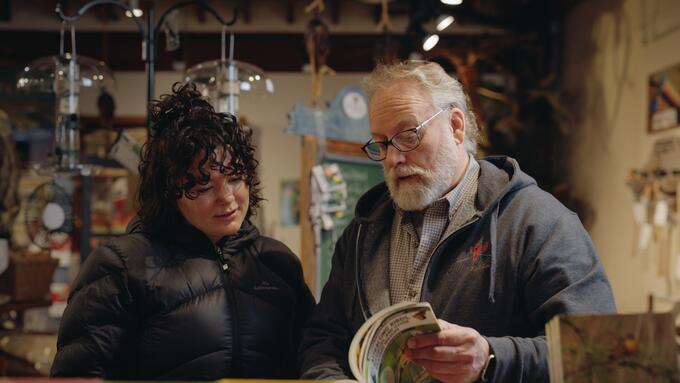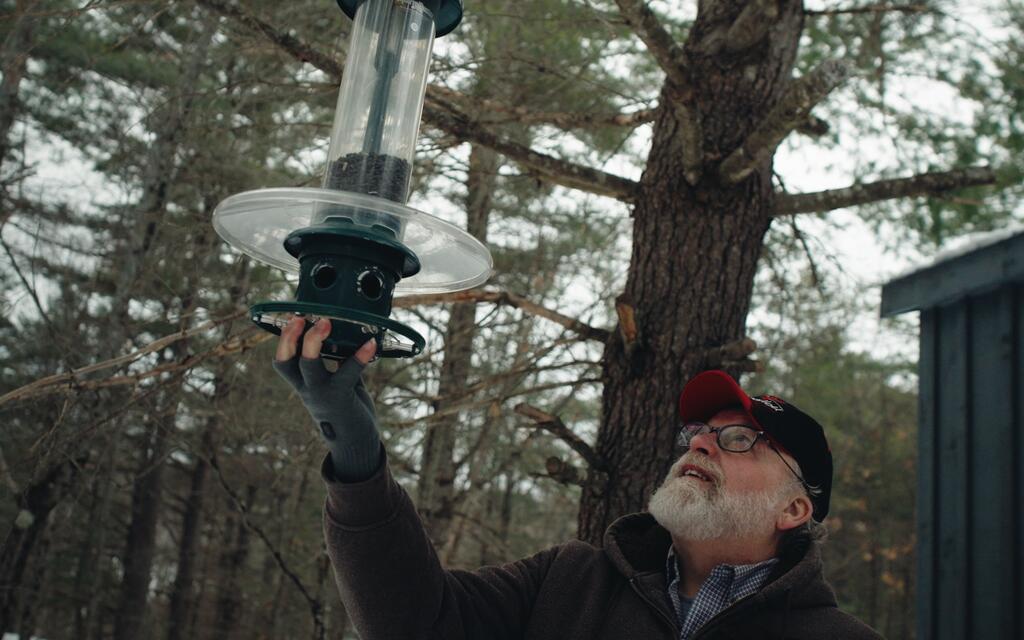It is Ontario’s Highlands’ pristine wilderness, abundant wildlife, and phenomenal vistas that call to people like Bob Volks, issuing an unspoken invitation to wander and reconnect with nature. With a lifelong passion for birding behind him, Bob is the ultimate connector – passionate about igniting in others an awareness of and connection with nature.
“More and more research has been done about the benefits of nature,” explained Bob. “Time in nature is now being used in mental health as a way to soothe anxiety, as your physiology changes with the energy from trees and rocks and plants…you’ve got to be changed when you come back out of it.”
Both Bob and his wife and business partner, Louise Beckinsale, have been birders all their lives, and their parents before them. Bob and Louise first met in 2006 and moved to Lanark County in 2010 before opening their birding and nature store, Gilligallou Bird Inc., in Almonte in 2011.

Named for the mythical bird from the Paul Bunyan stories, Gilligallou Bird offers nature enthusiasts high quality, non-GMO, pesticide free bird seed, along with a variety of other outdoors and nature-oriented products. Naturally, part of the proceeds from certain product sales at Gilligallou Bird go to supporting bird migration.
For Bob, birding begins with spending time in nature, and paying attention to what’s around you. One of his favourite seasons to experience the outdoors is in winter.
"Birding is a soulful experience, it reconnects us with nature."
“Watching the birds and listening to them, spring is amazing to hear their sounds and be able to identify them,” said Bob. “The winter in nature is totally different, it’s quieter, the snow absorbs all kinds of sound and you’re able to clear your thoughts, your heartrate goes down, your blood pressure goes down.”

Spending time in nature in all four seasons is one of the best ways to foster a connection with the earth, and prior to the pandemic Bob and Louise offered outdoor excursions to get people out into nature. One of those excursions was called “Wilderness Walk Wednesdays” and involved spending an hour or more at High Lonesome Nature Reserve near Pakenham. Bob would lead participants on a slow and immersive walk in the area to learn more about the vastness of biodiversity found in the region.
Bob noted that bird populations in North America have dwindled by millions since the 1970s, and supporting their numbers is critical to maintaining healthy ecosystems. It is regions like Ontario’s Highlands that play an important role in keeping those numbers thriving, and it is the untouched nature of the region and the diversity of wildlife that initially appealed to Bob and Louise.

Ontario’s Highlands plays an important role in bird migration and its immense biodiversity found in lakes, rivers, creeks, swamps, wetlands, and large tracts of trees of connected forest make it a good spot for birds to thrive.
“From a bird’s perspective, this rich biodiverse area is even more important than ever as urban sprawl, pollution and habitat loss are limiting the areas of their survival,” said Bob. “Go to any back road, park, green space, or hiking trail and with a keen eye you’ll see many birds more people never even notice, from chickadees to eagles and everything in between can be found here.”

Bob grew up on small family dairy farms and explained that a respect for nature was built into his daily life, along with learning how to work with nature rather than against it, something which seems to be missing today.
“Farming was more of a lifestyle at the time, and it was a nature relationship. We always had a real connection to the land, but there is a big detachment in society today,” said Bob. “Growing up, we always walked in the trees, played in the lake, and one thing led to another in terms of learning different species and learning their calls.”

Today that love of nature is seen in the work he does at Gilligallou Bird and the people he inspires to discover their own love of wildlife. Changing the way we operate so we leave space for birds to thrive is something Bob talks about with his customers, noting that making an effort to attract birds is worthwhile.
“When we bring birds to our backyards we’re not only bringing them we’re bringing butterflies, bees, and pollinating bugs,” Bob said. “People ask me how do we attract birds? Well, you create habitat with native grasses, plans, shrubs, trees, and create a rich biodiverse area in your yard, no matter how big or small.”




